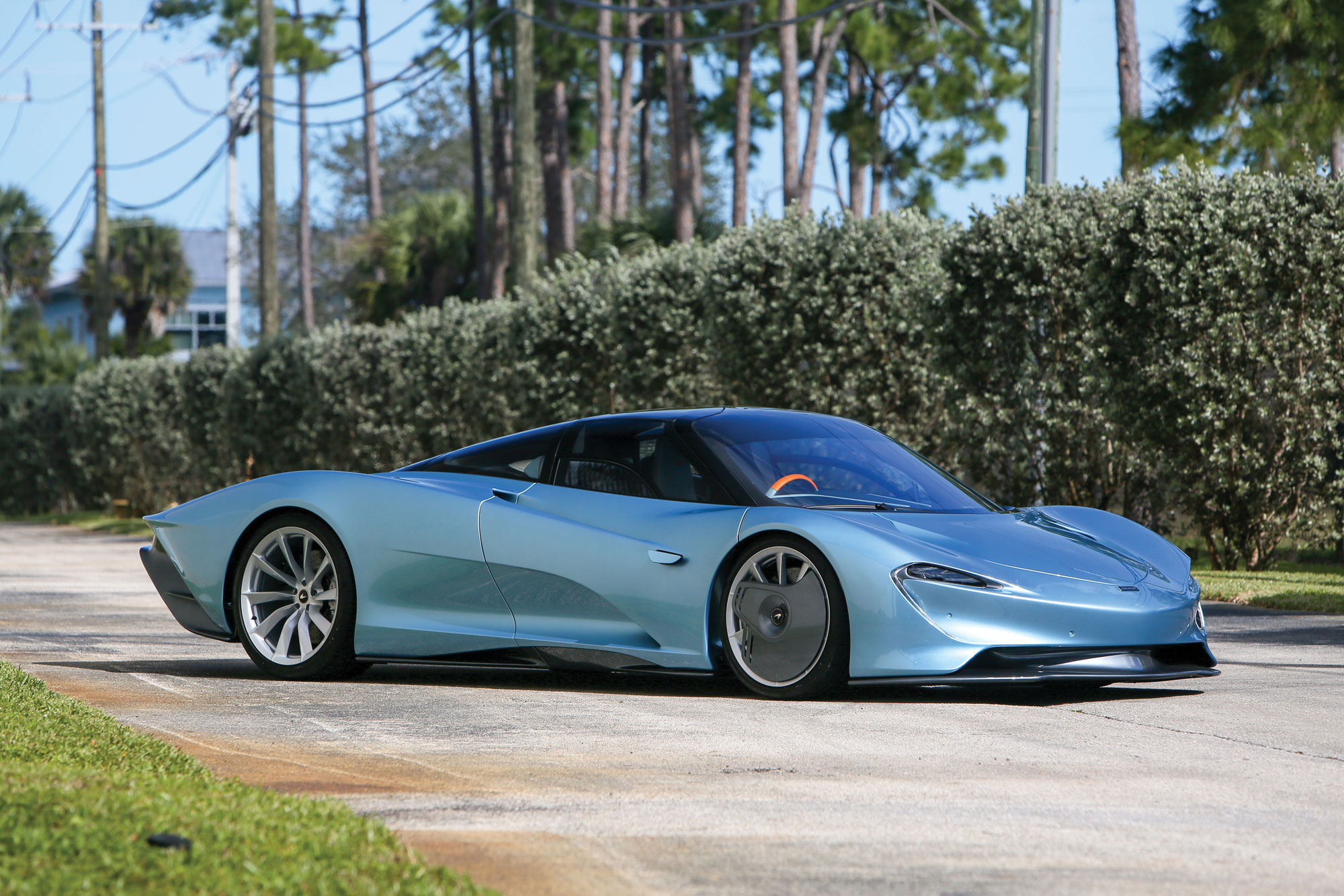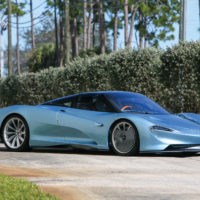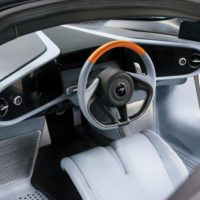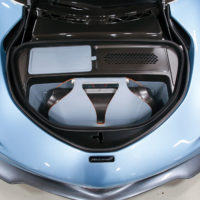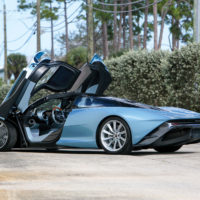SCM Analysis
Detailing
| Vehicle: | 2020 McLaren Speedtail |
| Years Produced: | 2020 |
| Number Produced: | 106 |
| Chassis Number Location: | On floor beneath the right-hand passenger’s floor mat |
| Engine Number Location: | Bottom of engine block; visible after removal of the aerodynamic underfloor panels |
| Club Info: | McLaren Owners Car Club |
| Website: | http://www.mclarenlife.com |
| Alternatives: | 1999–2019 Pagani Zonda, 2016–22 Koenigsegg Regera, 2018–22 McLaren Senna GTR |
This car, Lot 143, sold for $2,700,000, including buyer’s premium, at RM Sotheby’s Amelia Island auction, on March 5, 2022.
McLaren announced the Speedtail in 2018 as a so-called Ultimate Series model — think hypercar, not supercar. As such, the 3-seater’s quirks were so extreme that it was never homologated for the U.S. market. Due to its unwavering focus on top speed, the Speedtail implemented design curiosities such as extendable side pods with small digital cameras in lieu of rear-view mirrors, and an extremely tapered tail embedded with ailerons that bend a flexible carbon-fiber skin in order to act as an air brake for high-speed stops.
More crucial to the Speedtail’s marketing, however, were its ties to the ultimate, all-time range-topper: McLaren’s F1. Claiming allegiance to what many consider the hypercar to end all hypercars, the Speedtail inherited a few of its legendary antecedent’s unique features, including a driver’s seat smack in the center of the interior and a 106-unit production run. Two decades after the F1 achieved 243 mph at the hands of Andy Wallace, McLaren’s Speedtail was hailed as the company’s fastest car ever, boasting a top speed of 250 mph. The feat was achieved over 30 times at Kennedy Space Center, as though to emphasize the car’s otherworldly capabilities.
A particular set of skills
Unlike the almighty F1 to which it tips a hat, the Speedtail is less a lightweight track weapon and more of an ultra-luxe high-speed cruiser. Another important differentiator: In contrast to the F1’s legendary Le Mans-winning longtail spinoffs, the Speedtail didn’t yield any motorsports variants, perhaps making it seem less legit compared to competition-derived stablemates.
There’s a peculiarity to the act of lifting the dihedral doors and maneuvering into the centrally positioned driver’s seat, and even more weirdness to being flanked by two passengers just aft of the middle perch. That said, once one is acclimated within the symmetrical cockpit, the whole thing comes together beautifully — the disarmingly rich smell of leather, the perfectly on-center steering and the panoramic view through the curved windshield.
Driving a Speedtail delivers a unique sense of occasion, with brutal-yet-turbine-smooth acceleration that’s good for 186 mph in a claimed 12.8 seconds. What it lacks in stand-out party tricks like other Ultimate Series McLarens (ie., the Senna’s outstanding downforce and retina-detaching brakes, or the Elva’s unconditional exposure to the elements), it makes up for in outright plushness, comfort and top speed thanks to its slippery aerodynamic drag coefficient and expansive, 17-foot-long footprint. It’s a shame that few of these cars will likely be driven much; most Speedtails seem to have no more than three-digits mileage on their odometers.
A sky full of stars
The Speedtail certainly seemed alien to U.S. collectors when the order books opened. With a starting price of £1.75m ($2.29m), 106 slots were quickly filled and each example ordered to spec — with pricing available only in pounds sterling, not U.S. dollars. One McLaren rep guesstimates that of the 106 Speedtails produced, only 35 to 40 have made it to the U.S.
Unlike 2013’s so-called Holy Trinity of hybrid hypercars — the Ferrari LaFerrari, McLaren P1 and Porsche 918 Spyder — the Speedtail is faced with fewer head-to-head contemporaries. Its production numbers are scant compared to the run of 500 Bugatti Chirons, and more in line with boutique manufacturers like Pagani and Koenigsegg. With Ferrari now geared up for near-unlimited production of its flagship SF90 plug-in hybrid, models like the Speedtail stand out as finite offerings that represent a specific moment in supercar time.
The long view
The relative scarcity of McLaren Speedtails means sales don’t come along very often. That said, recent transactions include the sale of Michael Fux’s 109-mile Speedtail, chassis #100, at Mecum’s 2022 Kissimmee auction, for $3.3 million and chassis #61, which fetched $3,277,500 at RM Sotheby’s 2021 Scottsdale auction (SCM# 6938838).
Why the modest outcome this time around? Believe it or not, many Speedtails received considerably more optional equipment through McLaren’s MSO division than this example. More crucially, if the F1 is any indication, it could be quite some time before the Speedtail earns its historical due. Though critics and enthusiasts still point to the F1 as the “G.O.A.T.,” even F1s hovered around the same million-dollar mark for years before eventually escalating to holy-grail status.
Optimists, brace yourselves: The Speedtail is unlikely to ever reach the F1’s current $20,465,000 SCM Median Value. However, this rare 3-seater does have a lot going for it — namely rarity, outlier aesthetics, and the uncommon combination of understated elegance and oversized performance. It doesn’t seem unreasonable to anticipate that given more time, the Speedtail will command a premium as wild as its unmistakable looks. Meanwhile, this particular example offered a near break-even for the seller and a fair acquisition cost for the buyer given the car’s modest use. ♦
(Introductory description courtesy of RM Sotheby’s.)
